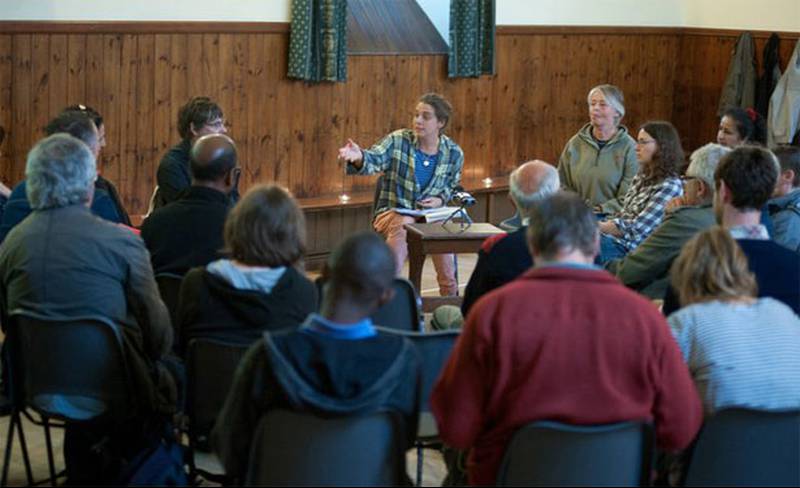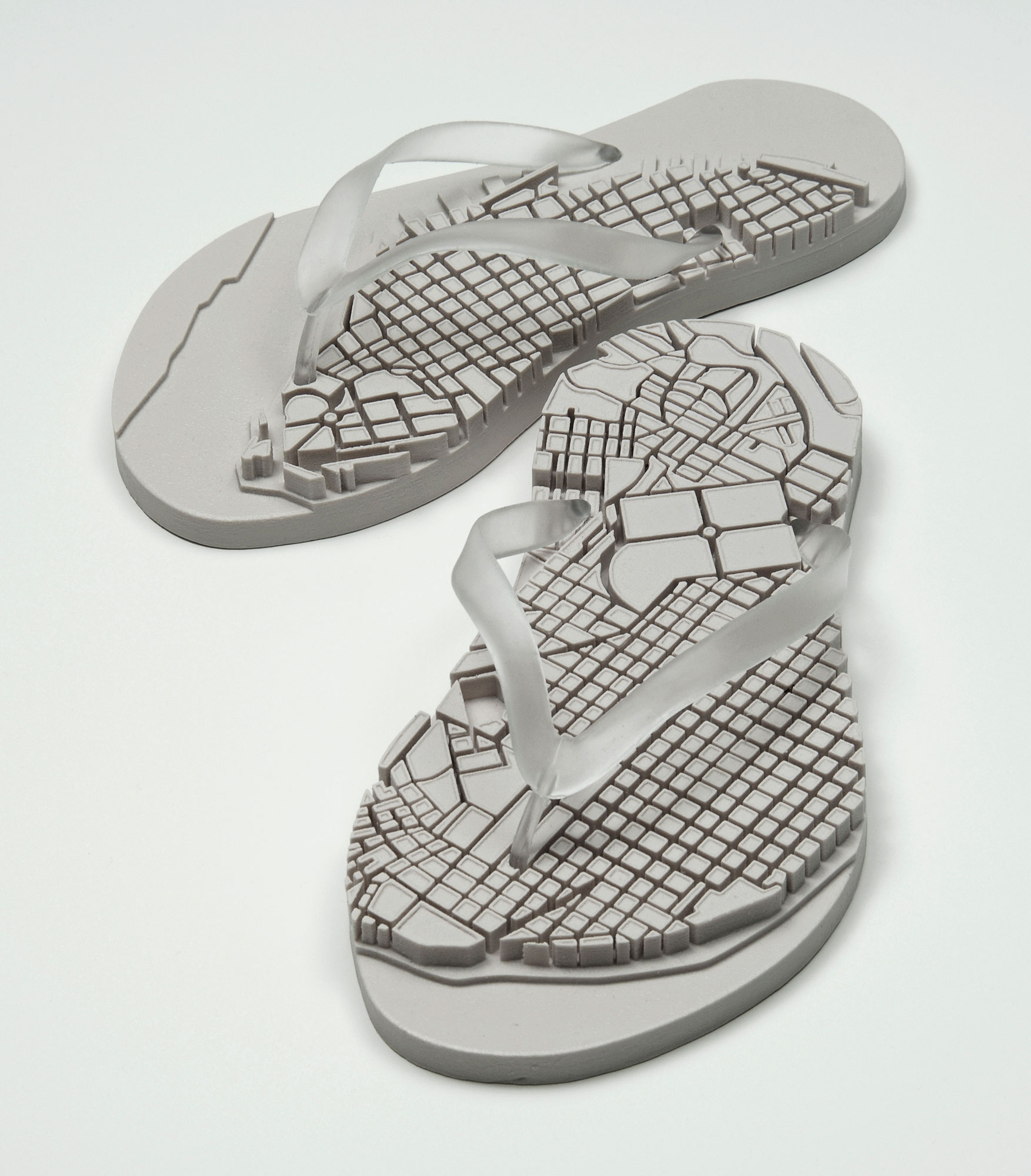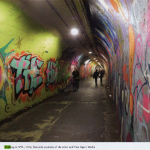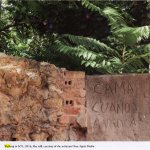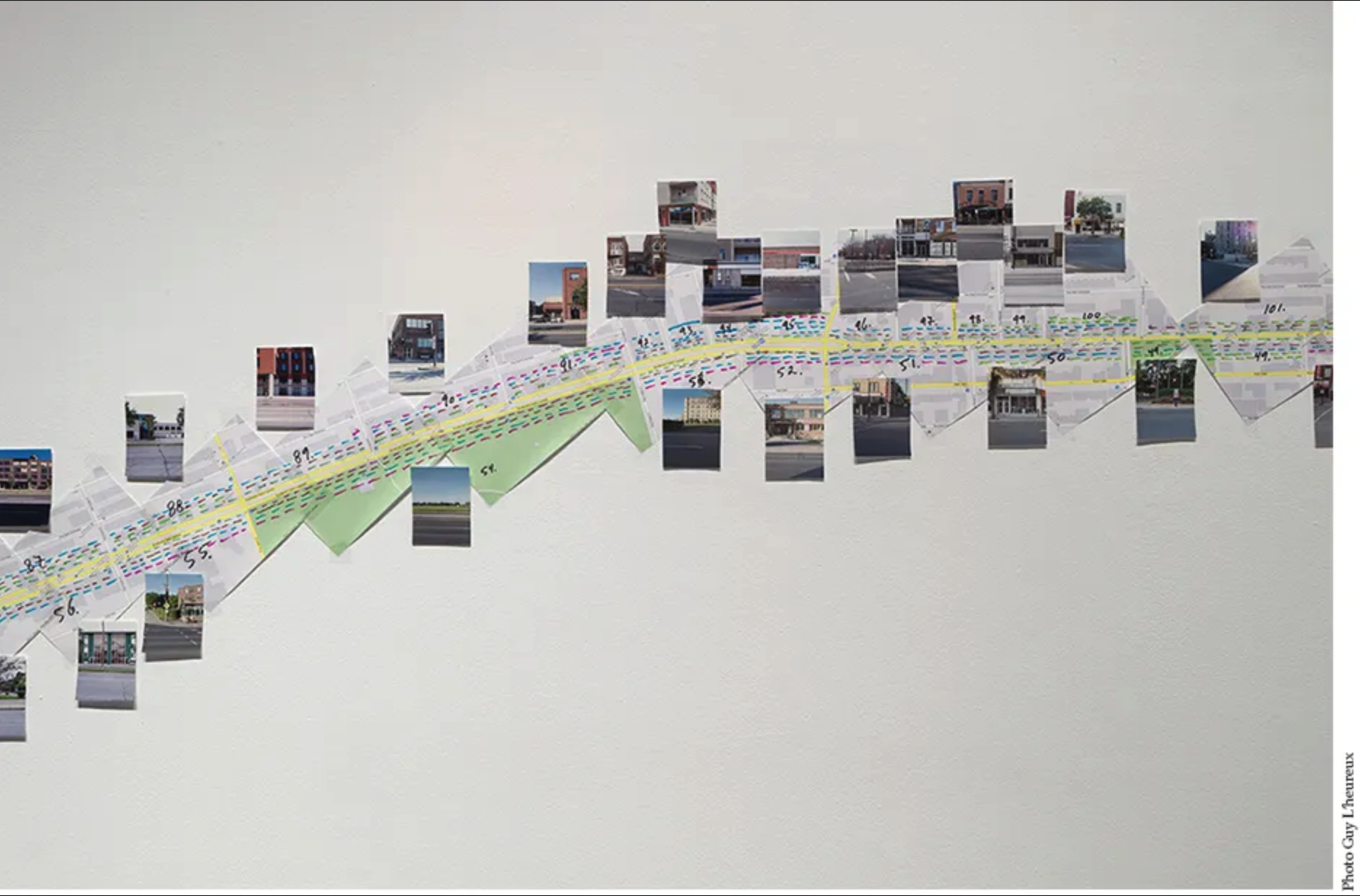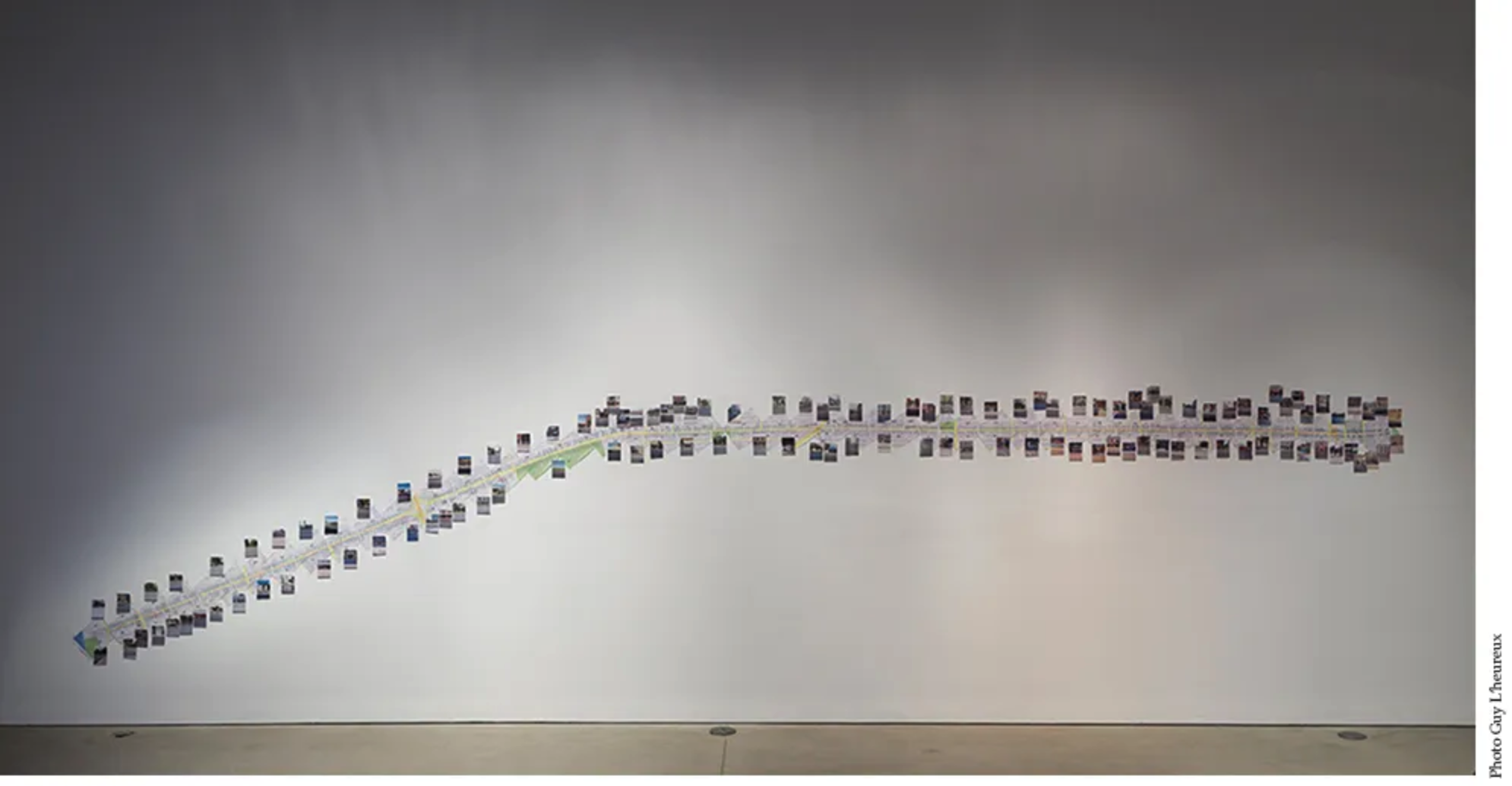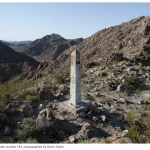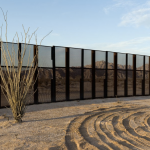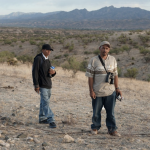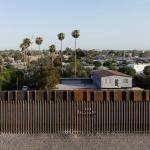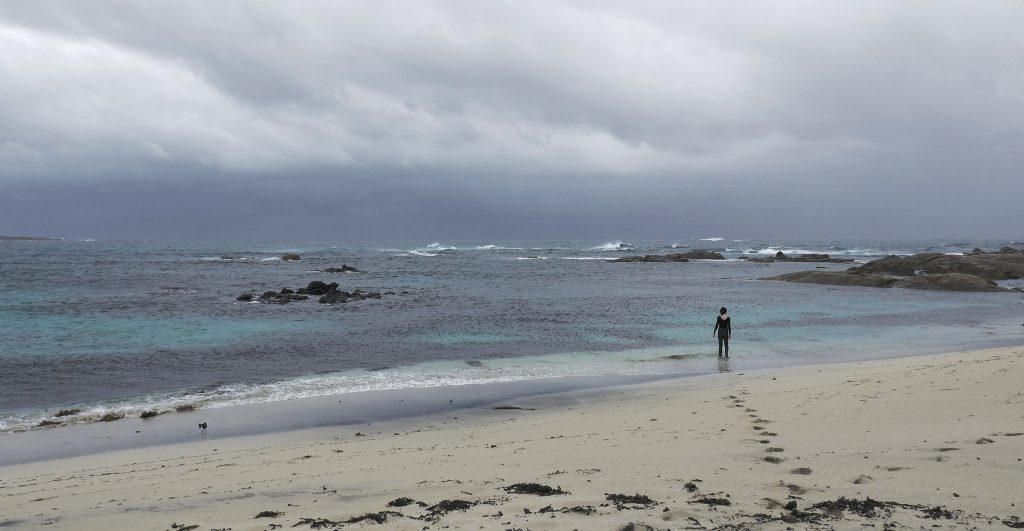
Lauren Brincat, Walk the Line (2016)
Single channel High Definition video, 16:9, colour, sound
5mins 16 seconds; Sound: Nick Wales; Cinematographer: Kuba Dorabialski
“Brincat commenced a series of walking works in 2008. Over the last 10 years she has made video documentations of actions as a type of self portrait or political statement.
Walk the Line is a companion piece to Lauren Brincat’s Salt Lines: Play It As It Sounds (20116), an epic sculptural instrument fashioned from sailcloth, which is continually reconfigured in allusion to shifting tidal currents.
The work was filmed at Cape Leeuwin on the south-western tip of mainland Australia, considered locally to be the point where the Indian and Southern oceans meet. Brincat invokes this speculative and spectral contact zone as a metaphor for the arbitrary lines that overwrite the world ocean, from meridians and parallels to the International Date Line and, in particular, judicial and territorial boundaries.
This new video belongs to an ongoing series that documents the artist marking out paths through different environments, from a lush empty field to a chaotic urban expressway. These simple propositions, performed with pragmatism, hark back to the instructional scores and minimal movement language of the sixties interdisciplinary avant-garde. Walking is framed as both an expanded act of drawing and as psychosocial mapping, which always culminates with Brincat’s disappearance beyond the limits of the camera’s view.
Departing from the single fixed shot of the earlier videos, Walk the Line progresses through three distinct scenes. The opening sequence shows Brincat’s hands wiping across fossilised geological formations that are scattered along the Cape: an instinctive gesture that describes the ancient surface of the landscape. In the second scene, she picks her way over rugged sand dunes, charting the coastline as physical threshold. The final suspenseful shot shows the artist walk across the beach and into the water, eventually being subsumed into its depths.
Unlike the ‘maintenance’ actions for Salt Lines, which are recurring and relational, Brincat’s performance here is conducted in solitude and hauntingly finite. Distilling the notions of departure and disappearance, it is understated but insistently political. Colloquially, to ‘walk the line’ means to abide by a moral code. At a time when the ocean has become a desperate means of passage to asylum and an ideological battleground, the work quietly foregrounds what is at stake in the permeability of abstract borders. — Text by Anneke Jaspers ” [credit]
—
“Lauren Brincat’s durational performance captured on video demonstrates how walking can be a mapping of space and time. Walk the Line (2016) is a five-minute video that takes place at Cape Leeuwin, Western Australia. In the first few seconds, the artist’s hand is shown up close making sounds by being swiped across the surface of various rocks before revealing the artist at a distance, traipsing across dunes. Then, moving away from the camera, Brincat is seen walking in a straight line towards the ocean, eventually disappearing under its surface. We learn from the wall plaque that the artist traces the topographical demarcation between the Southern Ocean and the Indian Ocean. More interesting is the actual structure of the work, which has an ambient soundtrack throughout yet starts as a type of percussion piece, appearing increasingly melancholic as the artist—wearing what looks to a be a full-body leotard—fades from view.
To “walk the line” usually means to conform to an established moral code, made famous by Johnny Cash. In Brincat’s hands, this clarity around responsibility is shown to be at odds with the relatively arbitrary mapping of two different oceans. Such ambiguity is present in much of Brincat’s work, who applies Paul Klee’s account of drawing as “taking a line for a walk” to the realm of video and sound art. Recalling the vernacular minimalism of British artist Ceal Floyer, in many of Brincat’s short, easy‑to‑watch videos, she plays out an idea within very specific everyday contexts to see what eventuates.” [credit]
